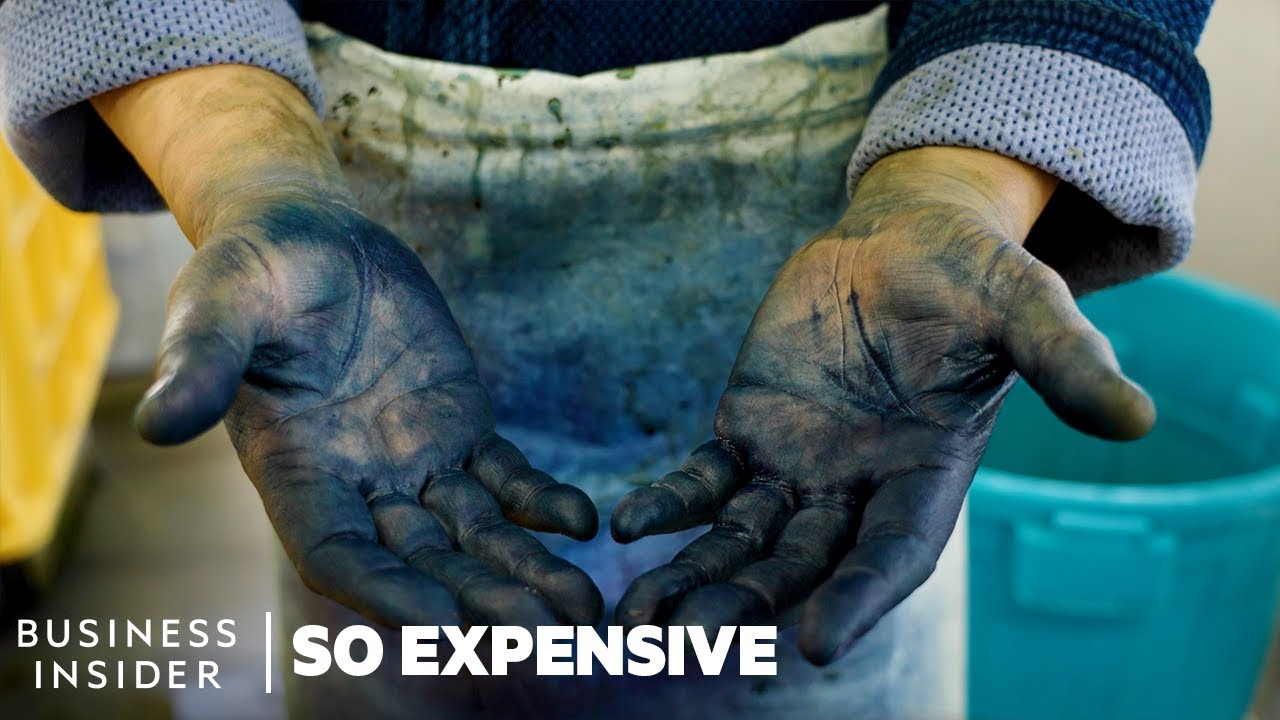In an intriguing journey through the art of denim dyeing, Hisao Manabe invests a staggering one to two months to imbue threads with a deep indigo blue hue. Remarkably, this labor-intensive process not only endows the denim with a lasting richness but also leaves Manabe’s nails stained for three weeks. This is a testament to his commitment to using genuine indigo, in stark contrast to the synthetic alternatives prevalent in most modern jeans production. Consequently, a pair of Momotaro jeans, crafted with this natural dye, can command a price upwards of two thousand dollars. However, the use of real indigo is merely one aspect inflating the cost of Japanese denim, a fabric celebrated for its unparalleled quality and the extraordinary precision in each step of its creation.
![]()
But what truly sets Japanese denim apart, often making it synonymous with premium and expensive? Typically, when we speak of Japanese denim, we’re not just referring to any denim produced in Japan, but rather to a specific kind, known as selvage denim. This term originates from the unique technique employed in weaving the fabric on traditional shuttle looms. These looms produce a fabric that features a self-finished edge, preventing fraying or unraveling, hence the name ‘self-edge’. Distinguished by a colorful line running along the cuff’s outseam, selvage jeans boast of a craftsmanship rooted deep in the heart of Kojima, Japan. This level of detail and care raises an intriguing question: does the distinctiveness of Japanese denim justify its lofty price tag?
is one of kojima’s most well-known denim brands but before momotaro makes denim it must first dye the threads the company’s most expensive jeans are hand-dyed with natural indigo natural indigo comes from the leaves of the indigo pharah plant dyeing fabric with natural indigo has been a valued art form in japan for centuries.
60 rolls of cotton over several days he rings each roll out and hangs it up to dry before dyeing another otherwise the color won’t be a dark enough blue dyeing jeans this way doesn’t only take longer it also costs more a kilogram of some synthetic indigo can cost between four and five dollars depending on the quality natural indigo might cost ten times that um that one veil is only enough to dye about 15 pairs of jeans although using natural dye raises the cost of production it has unique effects on genes that can’t be produced by synthetic dyes.
today cheaper synthetic dyes have mostly replaced natural ones so jeans still made with natural dyes are often considered a premium product which is partly why momotaro’s kenton or gold label jeans are worth over two thousand dollars the increased price of this pair is a nod to the extra effort skill and money needed to dye the threads by hand and get the color just right not all japanese denim or momotaro jeans are made with natural indigo but even so the price remains high around 200 to 300 for a pair like this and that goes back to the way japanese denim is woven before toyota made car.
it made looms like this originally introduced in the 1920s these toyota looms are no longer made today and although they look and sound like they’re working fast weaving fabric this way takes five times despite the looms being automated an experienced momotaro technician has to keep a close eye on them as they run he checks to see each loom is working smoothly and that all the threads are aligned correctly even so it’s possible something will go wrong um on top of weaving slowly the looms produce fabric less than a yard wide that’s about half the width of non-selvedge denim so producers need more fabric to make a pair of selvedge jeans this is yet another factor that increases the cost of production and ultimately the final price of the jeans shuttle looms are also less precise than projectile looms but variations in the fabric make each yard unique and ironically that’s what gives these jeans one of their biggest appeals while most other genes have a smooth surface japanese denim is a little bit rougher.
so it’s while most momotaro jeans are made on the automated looms the most expensive gold label jeans are produced with an even slower more traditional method by hand with an antique loom it takes one hour for kazuki ikeda to weave just 10 centimeters of fabric while this process raises the price the extra effort gives the jeans a distinctly different feel and for denim enthusiasts traveling from thailand to tokyo is worth the trip to buy momotaro’s most expensive pair usually when you brought a new pair of jeans you feel it’s a little bit hard and you you feel like a little bit it’s a little bit hard to move at first right but this one even from the start yeah it feels so comfortable like you have void for sometimes after the fabric is woven by hand or shuttle loom it heads to the sewing room according to huddles on average most other types of denim weigh between 11 and 14 ounces while most denim from japan weighs 20 ounces a heavier fabric makes naomi takebayashi’s job more challenging another cornerstone of japanese denim is the artisanal nature of the way the jeans are finally formed at mamotaro all the stitching is done by hand.
the same goes for adding each copper rivet the final look and feel of a finished pair largely depend on takebayashi’s dedication to detail because shuttle looms are less precise the fabric will naturally have several imperfections but if momotaro’s retail stores find anything wrong with a pair of jeans they mark it with a small sticker and send it here to the quality control room takebayashi sists through the flag jeans using a tweezer to repair each marked spot momotaro is one of around 40 denim makers in kojima considered the birthplace of denim in japan while japanese denim from this city has found a luxury category to call its own the denim industry hasn’t been prominent in kojima for very long.
in the decades since japanese denim has reached far outside japan today it’s considered one of the finest types of denim in the world you

Read More: April 2024 Exclusives: Top 10 Must-Buy Items at Costco!






Leave a Comment